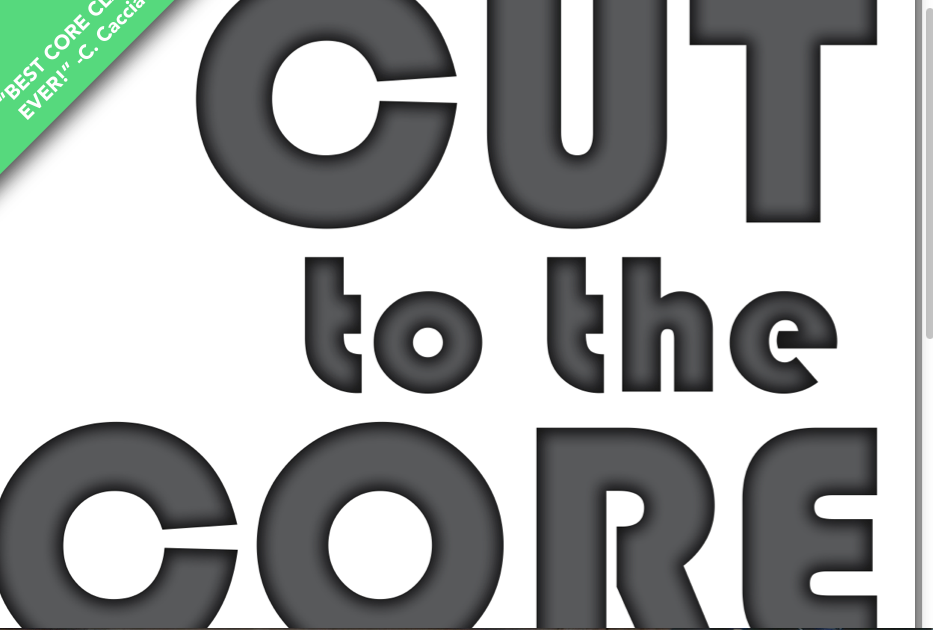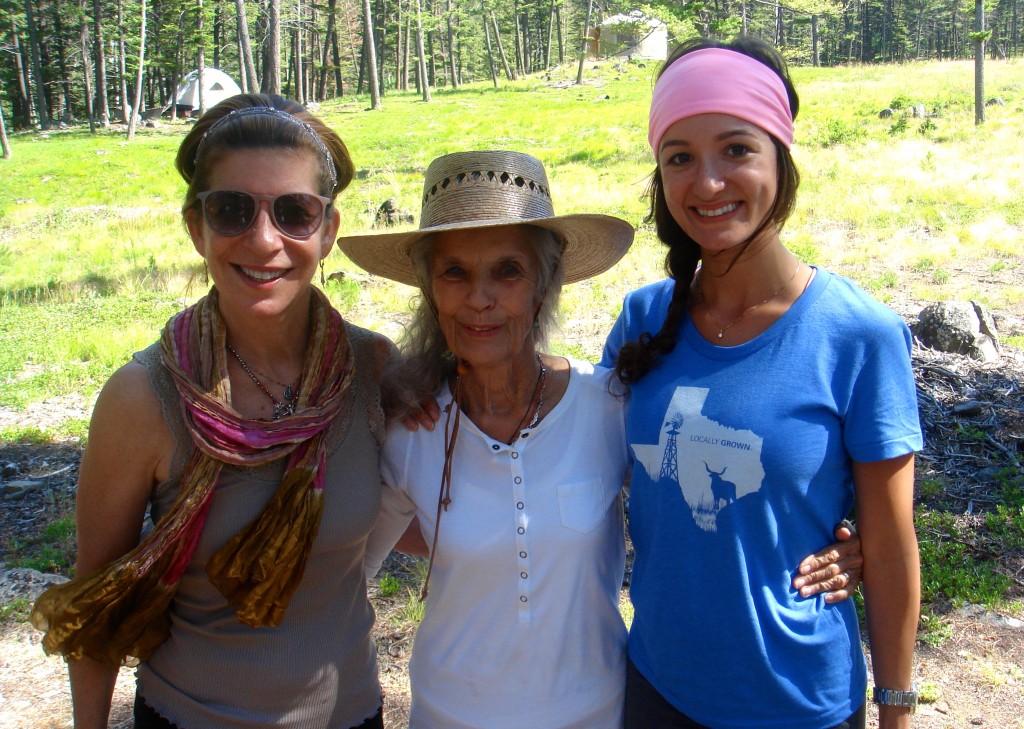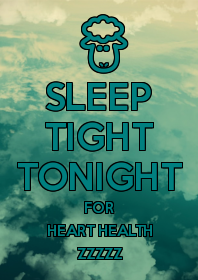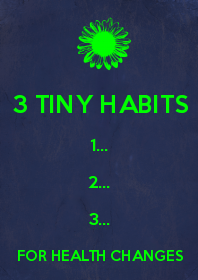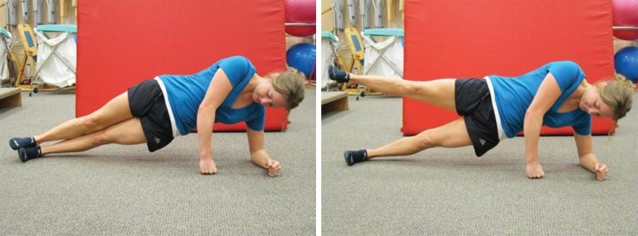Author Archives: ConAron2799
Slowing down aging with strength and grace
TRX Suspension Training Group
Leave it to a Navy Seal to figure out a way to stay in peak condition. On missions, a few lengths of parachute webbing stitched together evolved into the hottest trend in body weight training-TRX Suspension Training. Join us every Monday @ 2-3 pm for an exciting class with this fun new method of functional training. Please contact me for more info.
Sleep Matters
Sleep. We barely give it thought, until we can’t, yet it is fundamental for health and productivity. We spend approximately one third of our lifetime asleep, crucial time when the brain recharges, and goes to work consolidating the days learning into memory. Except for babies and children, our need for seven to eight hours of sleep each night doesn’t change throughout our lives, but our sleep patterns do, as anyone wide awake at three in the morning knows. An older adult who goes to bed earlier and wakes up earlier might nap more during the day . A teenagers’ biological clock keeps them awake later in the evenings and sleepier early mornings. Biological conditions unique to women: menstrual cycles, pregnancy, and menopause can wreck havoc on sleep. A recent National Sleep Foundation poll of adults revealed that women are more likely than men to have difficulty falling asleep and staying asleep. Forty million Americans suffer from sleep disorders. Yet what happens during sleep is stunning.A new sleep study conducted by monitoring the brain waves of 6-10 year olds sleeping shows that the brain goes through a remarkable amount of reorganization during puberty that is necessary for complex thinking.
There is an even more compelling reason for a good night’s sleep for your well-being. People who sleep poorly and less than six hours have a 65% higher risk of dying from a heart attack or stroke compared to sound sleepers who are getting seven-eight hours. This didn’t apply to sound sleepers getting only six hours who wake up feeling fit and rested. The research from Wageningen University and the National Institute for Public Health and the Environment is based on 20,000 people, with a ten and fifteen year follow-up. The Dutch study, published last week, showed that if you eat well, don’t smoke, drink moderately, and are physically active the risk of dying from heart disease is lowered by a staggering 83 %. (Adding only one of these positive lifestyle factors lowers the chance of developing heart disease by 57%.)
Until recently it was unclear why we eat more when we don’t get enough sleep. Just getting less sleep doesn’t mean you will gain weight, but a recent study done at the University of Colorado and published in the Proceedings of the National Academy of Science showed the participants sleeping up to five hours a night ate a smaller breakfast but binged on after-diner snacks. : “When people are sleep restricted, the findings show they eat during their biological nighttime when internal physiology is not designed to be taking in food”, says Kenneth Wright, director of CU Boulder Sleep and Chronobiology Laboratory. Nighttime eating was well over the amount of calories than any other meal consumed. These findings add to the growing body of evidence that late night eating certainly can add unwanted weight.
Here are some tips from the National Sleep Foundation intended for “typical “ adults, but not necessarily for people with specific medical problems, when consulting with your doctor would be the best approach.
1.Go to bed and wake up at the same time including weekends. Our internal clock is regulated by a circadian rhythm that all living beings have-roughly a 24-hour cycle. It rises and falls at different times of the day, depending on whether you are a “morning person” or “evening person” Getting enough sleep ensures the dips are less intense
2. Establish a relaxing nighttime ritual. A hot bath is a better idea than paying bills. Try to wind-down away from computers, or bright lights. The brightness stimulates neurons that help control the sleep-wake cycle that it is time to shine, rather than snooze.
3. Create an environment that is dark, quiet and cool. A quiet environment free of interruptions makes your bedroom reflective of the value you place on your sleep. If your partner snores, try earplugs. Eyeshades or a humidifier can help with light or dry temperatures.
4. Sleep on a comfortable mattress and pillows. If your mattress isn’t comfortable and supportive, it may be time for a new one, as the life expectancy is about 9-10 years. Also check for allergens that might affect you.
5. Finish eating at least 2-3 hours before bedtime. Eating and drinking too close to bedtime might make you feel uncomfortable.
6 . Exercise regularly. Vigorous exercise, or any at all, is better than no activity, but not at the expense of your sleep.
7. Avoid caffeine ( coffee, tea, chocolate ) and alcohol close to bedtime. It can keep you awake. Caffeine sensitivity can vary widely: it takes between four and seven hours for half of the stimulant to leave your body, making it harder for you to wind down. Although many people think of alcohol as a sedative, it actually disrupts sleep and leads to a night of less restful sleep.
Recharging sounds like a great idea. Sweet dreams tonight.
Connie Aronson is an American College of Sports Medicine health & fitness specialist.
Published in the Idaho Mountain Express April 26, 2013
New Apps Help Create New Habits
1. tinyhabits.com Stanford professor BJ Fogg teaches classes about habits. ” I’m fascinated with how habits form. I believe that to design new habits for ourselves or for others, the best starting point is to do what I call “Tiny Habits”. His goal is to help you practice the skill of creating new habits.” I believe you can get better at creating new habits. Much like a pianist who practices scales, or a chef who practices knife skills, people can practice the skills of creating habits. I was hooked when BJ suggested after brushing your teeth, floss one tooth. For me, flossing is one more thing that keeps me from getting into bed sooner.The criteria is that you choose a behavior that you do at least once a day ( brush my teeth ), takes less than 30 seconds, and requires little effort. The habits don’t have to be earth-shattering, but simple ordinary things that are useful in your life. By anchoring the new tiny habit behavior after an extremely reliable habit, you succeed in creating a small change ( teeth flossed -bed sooner )
2. stickk.com This goal-setting website began with a group of Yale economists to help users achieve goals and increase productivity with commitment contracts. They point out that for many of us who want to be on time, eat less sugar, lose a few pounds, or stop procrastinating on a project, it’s not always that simple. The site is based on two principles of behavior science. 1. People don’t always do what they claim they want to do. 2. Money talks, as you put money on the line.
3. Healthmonth.com is a game where you choose your own rules for the month and compete with other players.Choices can be anything from taking a multi-vitamin a day to limiting alcohol. You’re encouraged to experiment with what works best for you and deciding on which challenges are better suited for you. You can post self-created rewards and punishments, such as donating to a charity or eating a head of lettuce if you didn’t do what you said you would. The site challenges you by asking how important or difficult the rule is and whether you think you can pull it off, so you have accountability.
Before committing to a new app or site, make sure it’s a good fit for you, so your time will be well-spent. Let them inspire you in the coming New Year.
Connie Aronson is an ACSM Health & Fitness Specialist located at the YMCA in Ketchum.Visit her @www.conniearonson.com
Nice butt! How to get strong gluteals
Who doesn’t appreciate a nice butt? The buttocks, or gluteals is a group of 10 important muscles that allow us to stand and move. Less fat located anywhere on your body, not just the buttocks, is mostly due to two primary actions on your part—eating sensibly and being physically active However, aside from appearance, the gluteals affect your ability to walk, run, play sports, rise up from a chair and stand on one leg. In particular, the showy gluteal muscles are at the core of movements of the hip joint. The gluteals play an important role in maintaining a level pelvis, extend and externally rotate the femur, and prevent the legs from rolling inward.
The gluteus maximus, taking up a big portion of the shape of the buttocks, and the gluteal medius, located more laterally on the outside of the thigh, are muscles worth strengthening. You are less likely to suffer from tibial stress fractures, low back pain, iliotibial band syndrome, anterior cruciate ligament injury, knee problems and leg-related strains and pulls if you have proper alignment of the pelvis and femur. Unfortunately, it usually involves an injury that sends you to a physical therapist for rehabilitation where you learn the best exercises to improve gluteal strength.
Three top gluteus medius and gluteus maximus exercises used in rehab stood out in a study published in the International Journal of Sports Physical Therapy. In rank from the highest maximum voluntary isometric contraction value to lowest, these exercises were front plank with hip extension (106 percent), a single leg squat, (71 percent) and a side plank with hip abduction (73 percent). All of these exercises require no or minimal props, and can be done at home as part of your routine.
Front plank with hip extension: Start on elbows in plank with trunk, hips and knees in neutral alignment. Lift one leg off ground, flexing the knee, and extend your hip past neutral hip alignment by bringing the heel toward the ceiling for one beat and then return to parallel for one beat.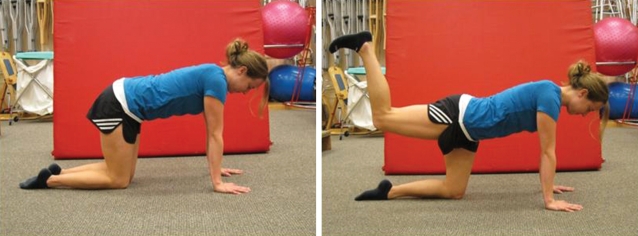 ( Photo 1 )
( Photo 1 )
Single leg squat: Stand on one leg and slowly lower buttocks to touch a chair 18 inches in height for two beats and then extend back to standing for two beats. ( Photo 2 )
Side plank with hip abduction: Start in a side plank position, keeping shoulders, hips, knees and ankles in line, then rise up to plank position with hips lifted off the ground. While balancing on elbows and feet, raise your top leg up (abduction) for one beat. Maintain plank position throughout all reps.
Side plank with hip abduction: Start in a side plank position, keeping shoulders, hips, knees and ankles in line, then rise up to plank position with hips lifted off the ground. While balancing on elbows and feet, raise your top leg up (abduction) for one beat. Maintain plank position throughout all reps. ( Photo 3 )
Photos used with permission from the International Journal of Sports Physical Therapy
Aim for 10-12 repetitions for all three exercises.
Connie Aronson is an American College of Sports Medicine fitness specialist. Visit her at www.conniearonson.com
Published in the Idaho Mountain Express Friday March 1, 2013
Slouch No More
Over time, slouching can be a pain in the neck. At any given time, neck pain affects about 10 percent of the adult population in the U.S. Our heads can be a heavy load, so much so that many of us have lost proper alignment because our heads are too far forward from the rest of the spine. The consequences of your head hanging off the front  spine, called forward head syndrome, can result in shoulder and rotator cuff problems, neck aches, headaches, back spasms and poor breathing patterns, all fixable problems.
spine, called forward head syndrome, can result in shoulder and rotator cuff problems, neck aches, headaches, back spasms and poor breathing patterns, all fixable problems.
Forward head syndrome is the first sign that muscle imbalances are present. This causes the front muscles, pectoralis and subscapularis, to become tighter and the muscles around the shoulder blades to become lengthened, both factors limiting the muscles’ functioning. You can assess forward head posture by having a friend look at your posture from the side. A neutral head is rooted firmly, like a tree, in the “ground” of the upper back with the ear aligned with the center of the shoulder.
Now face a mirror. Are your palms, or one more than the other, turned inward? If so, your shoulders are most likely slouched. Opening your hands so that the palms open in front and you can instantly correct some of your slouching.
The key to change is to become aware of old habits creeping in again.
As much as sitting in front of computers and television can be blamed for our heavy hanging heads, the root of the problem isn’t just that. Of course we would want to also look at the rest of the body to see if the cause may be coming from somewhere else. But overall, weak, tight muscles can inhibit moving well, as there is a rich dynamic inherent in the control of posture so that it is relaxed, not work. Ideal standing posture places the body’s joints in a state of equilibrium with the least amount of effort to maintain this upright position.
RX: Sitting upper-back strength exercises:
The cervical neck, seven vertebrae, blend into the thoracic region of the spine. This area supports the head and is an important attachment point for several muscles that support the middle back. You know them, as this is where stress builds up, in the levator scapula, rhomboids and the upper and middle trapezius. The following exercise can improve neuromuscular control and stabilize the spine:
Sit against a wall with your knees bent and firmly press your back, buttocks and shoulders into the wall. Pull your abdominals in to brace your core. Raise your
arms to shoulder level, bending your arms so that they are parallel to the floor and the backs of your upper arms rest against the wall. Gently press the back of your head into the wall, keeping your chin level. Exhale and firmly squeeze your shoulder blades together while
pressing the backs of your arms and shoulders into the wall. Hold for five to 10 seconds, relax, and repeat four times. You can also do this exercise lying on the floor, or advance it by combining it with a wall squat.
RX: Imagine this (sitting, standing or supine) (adapted from “Dynamic Alignment Through Imagery” by Eric Franklin )
Try resetting what standing or sitting straight feels like by visualizing the spine as a chain of spotlights. Turn on the lights and observe their focal directions. If they shine in many confused directions, adjust them so that they all focus in an even plane. Now adjust them so that they shine with equal brightness.
The key to change is to become aware of old habits creeping in again. Healthy shoulders require proper posture, good flexibility and good strength about the scapular region.
Connie Aronson is an American College of Sports Medicine health and fitness specialist. http://www.mtexpress.com/index2.php?ID=2005145909#.UQyHaaXJDzJ
Visit her at www.conniearonson.com.
New apps help create new habits
|
Fitness Guru The new year is a perfect impetus to jump-start fitness and health goals—a fresh start. But how do you keep it simple, so you stick with it and actually reach the goals that you want? Change is challenging, and what’s missing for most of us is specifics: a SMART plan, specific, measurable, attainable, relevant and timely. Today we have unprecedented instant access to good coaching, in the form of apps and smartphones. As a result of more mobile technologies, we have online communities, like Facebook with more than 900 million users, and You Tube, where more than 72 hours of video are uploaded every minute. You can find apps that charge you $5 for skipping going to the gym, like Gym-Pact’s aggressive take on motivation, or entertaining gaming and tracking sites that count calories: such as www.rexbox.co.uk/epicwin and www.myfitnesspal.com. Among the thousands of health and fitness apps, a few stand out that are lifestyle and behavior focused:
Stanford professor B.J. Fogg teaches classes about habits. “I’m fascinated with how habits form. I believe that to design new habits for ourselves or for others, the best starting point is to do what I call ‘tiny habits.’” His goal is to help you practice the skill of creating new habits. I believe you can get better at creating new habits. Much like a pianist who practices scales, or a chef who practices knife skills, people can practice the skills of creating habits. I was hooked when B.J. suggested that after brushing your teeth, floss one tooth. For me, flossing is one more thing that keeps me from getting into bed sooner. The criterion are that you choose a behavior that you do at least once a day (brush my teeth), takes less than 30 seconds and requires little effort. The habits don’t have to be earth-shattering, but simple ordinary things that are useful in your life. By anchoring the new tiny habit behavior after an extremely reliable habit, you succeed in creating a small change (teeth flossed—bed sooner).
This goal-setting website began with a group of Yale economists to help users achieve goals and increase productivity with commitment contracts. They point out that for many of us who want to be on time, eat less sugar, lose a few pounds or stop procrastinating on a project, it’s not always that simple. The site is based on two principles of behavior science: 1. People don’t always do what they claim they want to do. 2. Money talks, as you put money on the line.
Healthmonth.com is a game in which you choose your own rules for the month and compete with other players. Choices can be anything from taking a multi-vitamin a day to limiting alcohol. You’re encouraged to experiment with what works best for you and deciding on which challenges are better suited for you. You can post self-created rewards and punishments, such as donating to a charity or eating a head of lettuce if you didn’t do what you said you would. The site challenges you by asking how important or difficult the rule is and whether you think you can pull it off, so you have accountability.
Before committing to a new app or site, make sure it’s a good fit for you, so your time will be well spent. Let them inspire you in the coming new year. Connie Aronson is an ACSM health and fitness specialist located at the YMCA in Ketchum. Visit her online at www.conniearonson.com.
|
|
|
|||
|
|
Why Yoga Works – The Top Reasons to Try It
Yoga might be the only time in your busy day that is truly yours; a time when all of your attention is directed to exactly what you are doing. Today over 15 million people in the US know the value of doing just that-relaxing with yoga. The yoga that we practice today rises out of an ancient meditation heritage dating back at least 4,000 years. Fast forward to today’s crazy hectic pace, especially with the approach of the holiday season, the benefits to your physical, mental and emotional health are top reasons why yoga still works.
1. Stress relief. Yoga reduces stress by encouraging relaxation and lowering the levels of the stress hormone cortisol. Yoga teaches you how to breathe more fully by taking slower, deeper breaths. Known as pranayama, breathing more fully helps improve lung function and trigger the body’s relaxation response. By changing our pattern of breathing, we can significantly affect our body’s experience and response to stress. Other benefits include reduced blood pressure, cholesterol and heart rate, improved immune system as well as reduced anxiety, depression, fatigue, insomnia, and easier pregnancies.
2. Pain relief. Next time you have a headache, neck, back, or other chronic painful conditions, yoga can help. In the largest US study to date, published in the Archives of Internal Medicine, yoga or stretching classes were linked to diminished symptoms from chronic low back pain, more so than a self-care book. Both the yoga and stretching class emphasized the torso and legs. Researchers found that the type of yoga, called viniyoga, which adapts and modifies poses for each student, along with breathing exercises, works because the stretching and strengthening of muscles benefit back function and symptoms. Many people with chronic pain shy away from yoga’s misleading reputation for requiring supple joints for fear of getting hurt. But the same goes for approaching any new activity with too much gusto, writes Kelly McGonigal, Ph.D., in Yoga For Pain Relief . Instead of pushing yourself to your limit, think of staying in a 50-60% effort zone.
3. Better Posture & Better Bones. Yoga helps to maintain your muscularity and that helps with maintaining your posture. It also helps with stretching all the muscle groups that support better body alignment. For women, increasing research is showing that exercise is a means of preventing the risk of various cancers, particularly breast cancer. The reasons are twofold, in that both the physical effects and indirect effect of adding yoga as a form of exercise prevents weight gain.
4. Befriending Your Body. For anyone who feels ashamed or self-conscious about their body, yoga can help you become an alley with yourself instead of an adversary. Our obsession with thinness equates the physical practice as a good way to sweat/ get /thin/quick; all about the outer body. Yet yoga primarily evolved for a subtle and more powerful connection of the inner world: the mind, senses and emotions. Today 90% of all women and junior and senior high school girls, respectively, dislike their bodies and are on a diet. ( 15% of these girls are actually overweight.) It doesn’t help that classes might be packed with thin fit people. While yoga does teach you to use and discipline your body to be strong and flexible, the emphasis is on your body as a whole entity: living, changing, accepting and alive in the moment.
This article was originally published in the Idaho Mountain Express. November 16, 2012.
Connie Aronson is an American College of Sports Medicine Health & Fitness Specialist. Visit her at: www.conniearonson.com
Roots of Temptation-Just Say No?
 Thanks to our brain’s complex pleasure/reward system, we all succumb to the pull of food differently. For some, the brain sometimes can’t resist the powerful influence of a fabulous bakery or a plate of French fries, yet others are able to eat a little and stop. But for millions of people, food is never far from their minds. Ever. The current trajectory of the number of obese Americans, along with related disease rates and health care costs, is on course to increase drastically in every state by 2030. The analysis findings, based on a model published last year in The Lancet, show that all 50 states could have obesity rates of more than 44 percent, with medical costs associated with treating preventable diseases soaring from $48 billion to $66 billion per year. By contrast though, according to a study released by Trust for American Health and the Robert Wood Foundation, reducing the average body mass index by just 5 percent could prevent an epidemic. For a 6-foot-tall person weighing 200 pounds, a 5 percent reduction would be the equivalent of about 10 pounds. The good news is that scientists are learning more about the cue-urge-reward-habit cycle of the human brain, so that a 5 percent loss may be quite attainable without entirely giving up your favorite foods.
Thanks to our brain’s complex pleasure/reward system, we all succumb to the pull of food differently. For some, the brain sometimes can’t resist the powerful influence of a fabulous bakery or a plate of French fries, yet others are able to eat a little and stop. But for millions of people, food is never far from their minds. Ever. The current trajectory of the number of obese Americans, along with related disease rates and health care costs, is on course to increase drastically in every state by 2030. The analysis findings, based on a model published last year in The Lancet, show that all 50 states could have obesity rates of more than 44 percent, with medical costs associated with treating preventable diseases soaring from $48 billion to $66 billion per year. By contrast though, according to a study released by Trust for American Health and the Robert Wood Foundation, reducing the average body mass index by just 5 percent could prevent an epidemic. For a 6-foot-tall person weighing 200 pounds, a 5 percent reduction would be the equivalent of about 10 pounds. The good news is that scientists are learning more about the cue-urge-reward-habit cycle of the human brain, so that a 5 percent loss may be quite attainable without entirely giving up your favorite foods.
Neurons and Taste
For some people, certain foods seem to exert a magical pull, writes former Food & Drug Commissioner Dr. David Kessler in his book “The End of Overeating.” The food industry works hard to create high-calorie foods with the most addictive possible combination of intense flavor and “mouth-feel.” In his book, Kessler tells how neurons, the basic cells of the brain, are connected in circuits and communicate with one another to store information, create feelings and control behavior. Tasting tantalizing food stimulates the brain neurons that are part of the opioid circuitry, which is the body’s primary pleasure system. Known as endorphins, these brain chemicals have the same addictive and rewarding effects as morphine and heroin.
The Roots of Temptation
No matter how good the intentions, avoiding fattening foods is always a challenge, and biology is a factor in why it seems so difficult to bypass a bowl of M&Ms. Brain chemicals are in more regions than previously thought. Researchers have traced an unexpected area of the brain in rats that had primarily been linked to movement. This new evidence might help explain why chocolate can be so irresistible and why we binge. Published this week in Current Biology, a Cell Press publication, the research team probed a brain region called the neostriatum, causing the rats to gorge on twice the amount of M&M chocolates than they would otherwise have eaten. The researchers found that a neurotransmitter called enkephalin, a drug-like chemical produced in that same region of the brain, surged as they ate more M&Ms. The chemicals increased their desire and impulses to eat more.
“That means the brain has more extensive systems to make people want to overcome rewards than previously thought,” said Alexandra DiFeliceantonio of the University of Michigan. “The same brain area we tested here is active when obese people see foods and when drug addicts see drug scenes.”
It’s likely that these neurotransmitters wire us for a little overconsumption and addiction. Understanding what triggers overeating and how our neural pathways can stump us can be useful the next time you walk down the potato chip aisle. Five percent sounds like a good plan.

